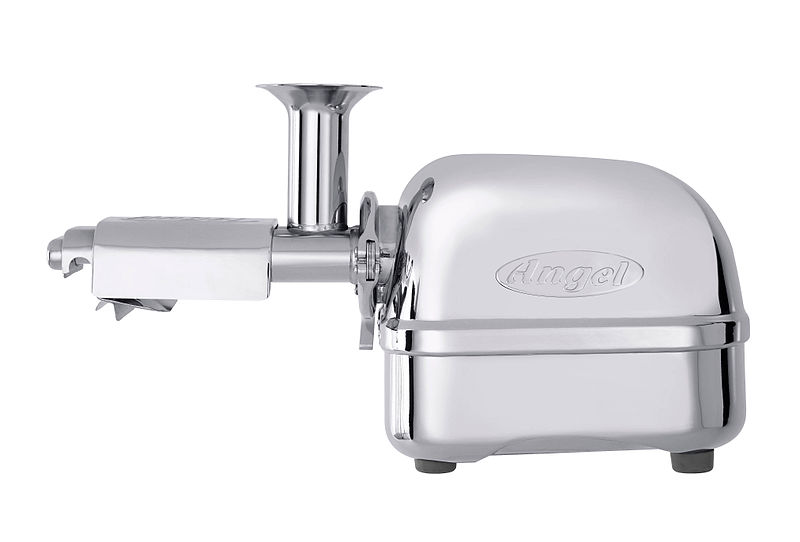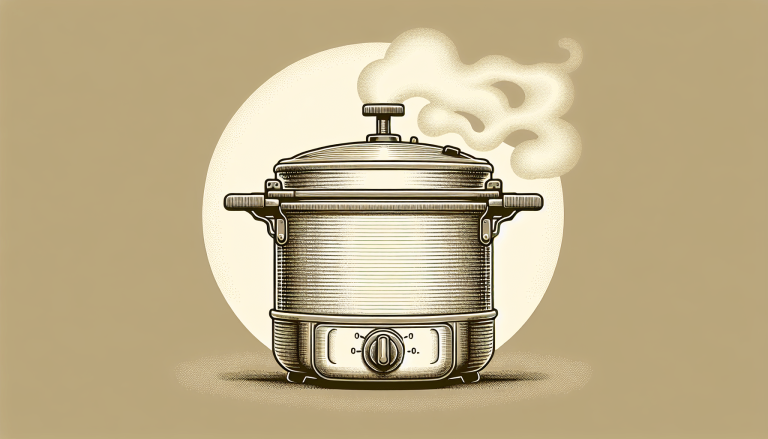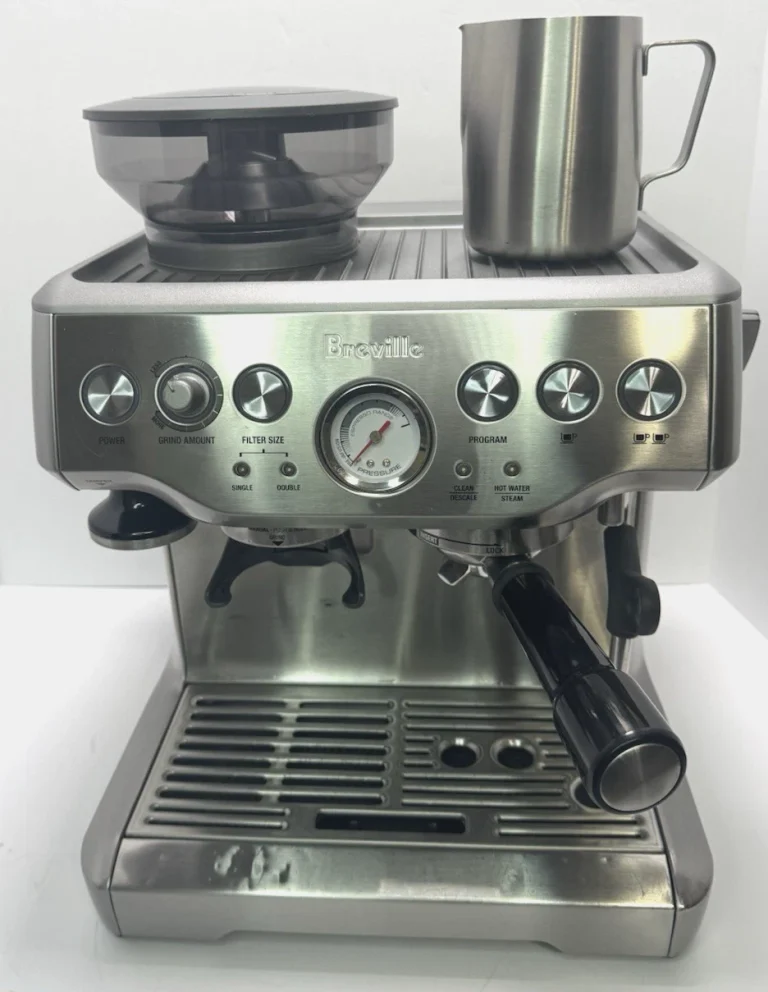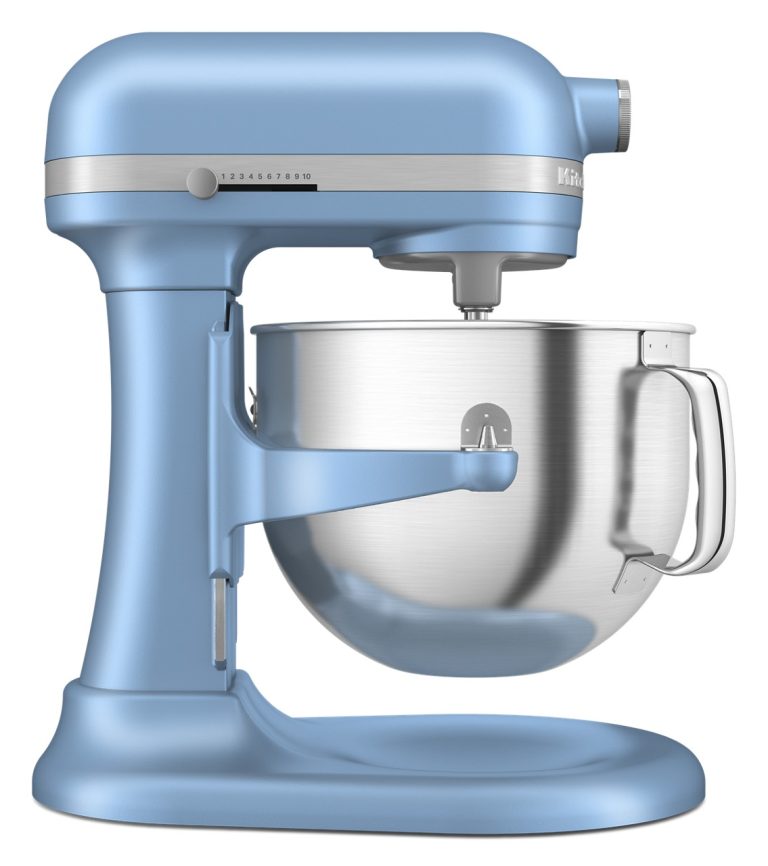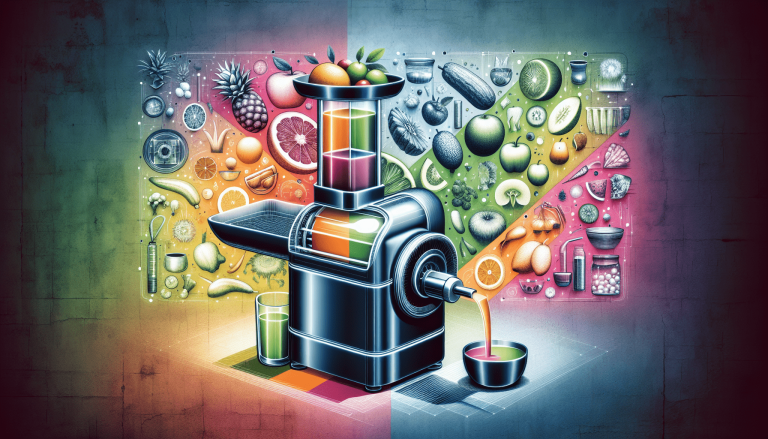How Does A Juicer Work?
Welcome to this article where we will explore the fascinating world of juicers and how they work. Whether you are new to juicing or just curious about the mechanics behind this popular kitchen appliance, you will learn about the different types of juicers and the basic principles of how they extract juice from fruits and vegetables. By the end of this article, you will have a better understanding of how a juicer can help you incorporate more fresh and nutritious ingredients into your diet.
Enjoy the journey of discovering how a juicer works! Have you ever wondered how a juicer works? If you’re curious about the inner workings of this popular kitchen appliance, you’ve come to the right place. In this article, we’ll explore the ins and outs of juicers and how they function to extract delicious juice from fruits and vegetables. So, grab a glass of your favorite juice and let’s dive in!
Understanding the Basics of Juicers
Juicers are ingenious devices designed to extract juice from various fruits and vegetables by grinding, crushing, or squeezing them. There are two main types of juicers: centrifugal and masticating (also known as cold press or slow juicers). Both types work in slightly different ways, but the end goal remains the same – to produce fresh and nutritious juice for your enjoyment.
How Centrifugal Juicers Work
Centrifugal juicers are the most common type of juicers found in many households. They operate by using a fast-spinning blade to shred fruits and vegetables into tiny pieces. The shredded produce is then forced against a mesh strainer by centrifugal force, separating the juice from the pulp. The juice is collected in one container, while the pulp is discarded in another.
Centrifugal juicers are known for their speed and convenience, making them a popular choice for busy individuals who want a quick and easy way to make fresh juice. However, they are less efficient at extracting juice compared to masticating juicers, and the high-speed spinning can introduce heat and oxygen, which may degrade the quality of the juice.
How Masticating Juicers Work
Masticating juicers, on the other hand, operate at a much slower speed than centrifugal juicers. They use a single gear or auger to crush and squeeze the fruits and vegetables, effectively extracting the juice. The slow and steady process helps preserve more nutrients in the juice and produces less heat and oxidation, resulting in higher-quality juice.
Masticating juicers are favored by health enthusiasts and juicing aficionados for their ability to extract more juice and retain the nutritional integrity of the produce. They are also versatile and can handle a wide range of fruits and vegetables, as well as leafy greens and wheatgrass.
The Components of a Juicer
To understand how a juicer works, it’s essential to know the key components that make up this ingenious appliance. Each part plays a crucial role in the juicing process, from feeding the produce to collecting the juice and pulp. Let’s take a closer look at the main components of a typical juicer:
Feeding Chute
The feeding chute is where you insert the fruits and vegetables into the juicer. It is usually located at the top of the juicer and comes in various sizes to accommodate different types of produce. Some juicershave wider chutes that can fit whole fruits and vegetables without the need for pre-cutting, while others may require smaller pieces to fit through.
Auger or Blade
The auger or blade is the component responsible for grinding, crushing, or cutting the fruits and vegetables into smaller pieces. In centrifugal juicers, the blade spins rapidly to shred the produce, while in masticating juicers, the auger slowly crushes and squeezes the produce to extract the juice.
Mesh Strainer
The mesh strainer is a fine sieve or filter that separates the juice from the pulp as the shredded produce is processed. It allows the juice to pass through while trapping the pulp, ensuring a smooth and pulp-free juice. Centrifugal juicers typically use a mesh strainer to separate the juice and pulp during the high-speed spinning process.
Juice Spout
The juice spout is where the extracted juice flows out of the juicer and into a collecting container. It is usually located at the bottom of the juicer and may come with a spout cap or stopper to prevent drips and spills. Some juicers have adjustable spouts to control the flow of juice and prevent clogging.
Pulp Container
The pulp container is where the leftover pulp and fibrous material are collected after the juice has been extracted. It is typically located next to the juice spout and can vary in size depending on the juicer model. The pulp can be discarded or used for other culinary purposes, such as baking or composting.
Juice Container
The juice container is where the fresh juice is collected and stored before pouring it into a glass or bottle. It is placed under the juice spout and should be large enough to hold the desired amount of juice. Some juicers come with a built-in juice container, while others may require using a separate container.
The Juicing Process: Step by Step
Now that we are familiar with the basics of juicers and their components, let’s walk through the juicing process step by step. Whether you’re using a centrifugal or masticating juicer, the following steps will guide you on how to operate your juicer effectively and extract delicious juice from your favorite fruits and vegetables:
Step 1: Prepare Your Produce
Start by washing and rinsing the fruits and vegetables you plan to juice thoroughly. Remove any seeds, stems, or tough skins that are not suitable for juicing. Depending on the size of the feeding chute, you may need to cut the produce into smaller pieces to fit through the opening.
Step 2: Turn on the Juicer
Plug in your juicer and turn it on using the power switch or dial. Allow the juicer to run for a few seconds to ensure that all the components are working correctly. Check that the juice spout and pulp container are positioned correctly and securely in place before adding the produce.
Step 3: Feed the Produce
Carefully insert the prepared fruits and vegetables into the feeding chute of the juicer. Use the plunger or pusher to guide the produce down the chute, ensuring a steady and consistent supply of fruits and vegetables for juicing. Avoid overloading the juicer to prevent clogging or jamming.
Step 4: Watch the Magic Happen
As the fruits and vegetables are processed by the juicer, you will see the juice flowing out of the juice spout and into the collecting container. The pulp will be expelled into the pulp container, leaving you with fresh and flavorful juice ready to be enjoyed. Sit back and marvel at the efficient juicing process unfolding before your eyes!
Step 5: Pour and Savour
Once you have juiced all your fruits and vegetables, carefully remove the juice container from the juicer. Give the juice a quick stir or shake to mix any separated layers before pouring it into a glass or bottle. Enjoy your freshly made juice and savor the vibrant flavors and nutrients packed into each sip.
Tips for Maximizing Your Juicer’s Performance
To get the most out of your juicer and ensure optimal performance, here are some valuable tips and tricks to keep in mind:
Choose High-Quality Produce
Select fresh, ripe, and organic fruits and vegetables for juicing to achieve the best flavor and nutritional benefits. Avoid using produce that is bruised, damaged, or past its prime, as it may affect the quality of the juice. Experiment with different combinations of fruits and vegetables to create unique and delicious juice blends.
Clean Your Juicer Regularly
After each use, disassemble your juicer and clean all the components thoroughly with warm, soapy water. Use a brush or sponge to scrub away any pulp or residue that may have accumulated during juicing. Rinse and dry the parts completely before reassembling the juicer for the next use. Regular cleaning and maintenance will prolong the life of your juicer and prevent bacteria growth.
Juice Leafy Greens and Citrus
Don’t limit your juicing repertoire to just fruits and hard vegetables – try juicing leafy greens like kale, spinach, and wheatgrass for a nutrient-packed boost. Leafy greens are rich in vitamins, minerals, and antioxidants that can enhance the nutritional value of your juice. Citrus fruits like oranges, lemons, and limes add a refreshing zing to your juice and provide a dose of vitamin C.
Experiment with Nutritious Additions
Enhance the flavor and health benefits of your juice by adding nutritious ingredients like ginger, turmeric, mint, or chia seeds. These superfoods are loaded with antioxidants, anti-inflammatory properties, and other health-boosting nutrients that can complement your juice recipes. Be adventurous and get creative with your juicing concoctions to discover new and exciting flavors.
Drink Your Juice Fresh
For the best taste and nutritional value, drink your juice immediately after it is made. Freshly extracted juice contains live enzymes, vitamins, and minerals that begin to degrade over time. If you need to store the juice for later consumption, transfer it to an airtight container and refrigerate it for up to 24 hours. Shake or stir the juice before drinking to recombine any settled solids.
Conclusion
Congratulations! You’ve now learned how a juicer works and mastered the art of juicing fresh fruits and vegetables like a pro. Armed with this knowledge, you can confidently use your juicer to create delicious and nutritious juice blends that will delight your taste buds and nourish your body. Remember, the key to successful juicing is to choose high-quality produce, clean your juicer regularly, and get creative with your juice recipes. So, grab your favorite fruits and veggies, fire up your juicer, and enjoy a glass of homemade goodness!

